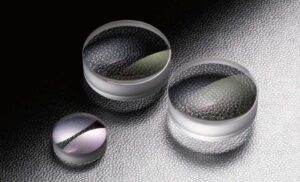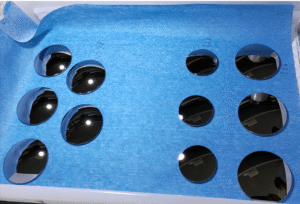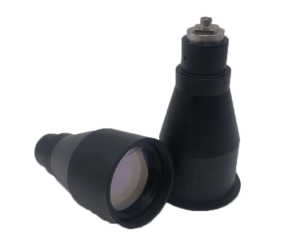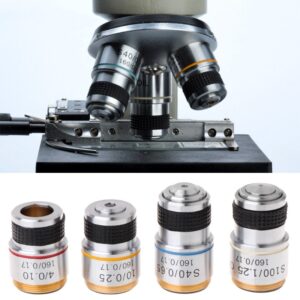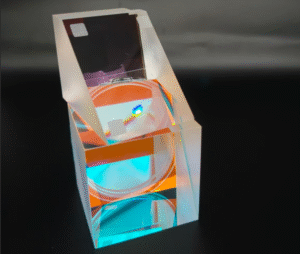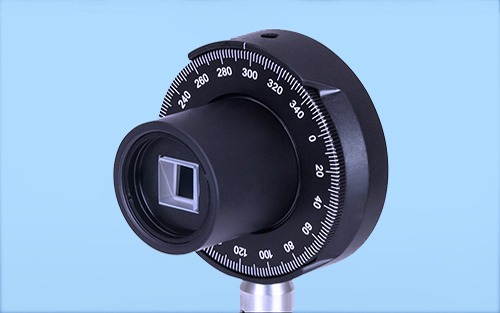Introduction: What Is Calomel (Hg₂Cl₂) in Optics?
Calomel, chemically known as Mercurous Chloride (Hg₂Cl₂), is a crystalline material best known in the optics industry for its exceptional birefringence and broad transmission range, particularly in the ultraviolet (UV) to mid-infrared (MIR) region. Although it is more commonly recognized in chemical or medical fields, its optical properties make it a high-value specialty crystal in infrared polarizers, waveplates, and other polarization-sensitive components.
At Bote Optics, we leverage materials like Calomel for high-precision, custom-designed IR optical components that meet demanding performance standards in research, aerospace, and defense industries.

Key Optical Properties of Calomel Crystals
| Property | Specification |
|---|---|
| Chemical Formula | Hg₂Cl₂ |
| Crystal Structure | Tetragonal |
| Transmission Range | 0.38 – 17 µm |
| Refractive Index (nₒ) | ~2.35 |
| Birefringence (Δn) | ~0.65 (among the highest known) |
| Optical Use | IR Polarizers, Waveplates, ATR optics |
Why is birefringence important? Birefringence allows a material to split light into ordinary and extraordinary rays. With Calomel’s Δn ≈ 0.65, it far exceeds common birefringent materials like calcite (Δn ≈ 0.17), making it ideal for compact high-performance polarizing elements.
Applications of Calomel in Optical Systems
Despite being a niche material, Calomel is increasingly valued for:
1. Infrared Polarizers
Due to its high birefringence and wide IR transmission, Calomel is excellent for Glan-type polarizers, Wollaston prisms, and beam splitters operating from 0.4 µm up to 17 µm. It’s especially effective in mid-IR polarization optics for spectrometry and gas sensing.
2. IR Waveplates
Half-wave and quarter-wave plates made from Calomel are much thinner than those made from quartz or MgF₂, while supporting wide-angle and broad-spectrum operations in the IR region.
3. ATR Crystals
In Attenuated Total Reflection (ATR) spectroscopy, Calomel serves as a robust substrate for sensing IR absorption spectra of liquids, solids, and gases.
4. Laser and Defense Systems
The material’s chemical inertness and non-hygroscopic nature make it attractive in laser diagnostics, optical isolators, and infrared countermeasure systems.
Why Choose Calomel over Alternatives?
| Material | Transmission (µm) | Birefringence | Key Advantage |
|---|---|---|---|
| Calomel | 0.38 – 17 | ~0.65 | Extreme birefringence, broad IR |
| Calcite | 0.2 – 2.5 | ~0.17 | Common, but limited IR range |
| YVO₄ | 0.4 – 5 | ~0.21 | Good for VIS-NIR |
| KRS-5 | 0.6 – 40 | ~0.05 | Long-wave IR, low birefringence |
While materials like calcite and YVO₄ are widely used in visible or near-infrared optics, Calomel outperforms them in applications requiring mid-IR operation and high polarization efficiency.
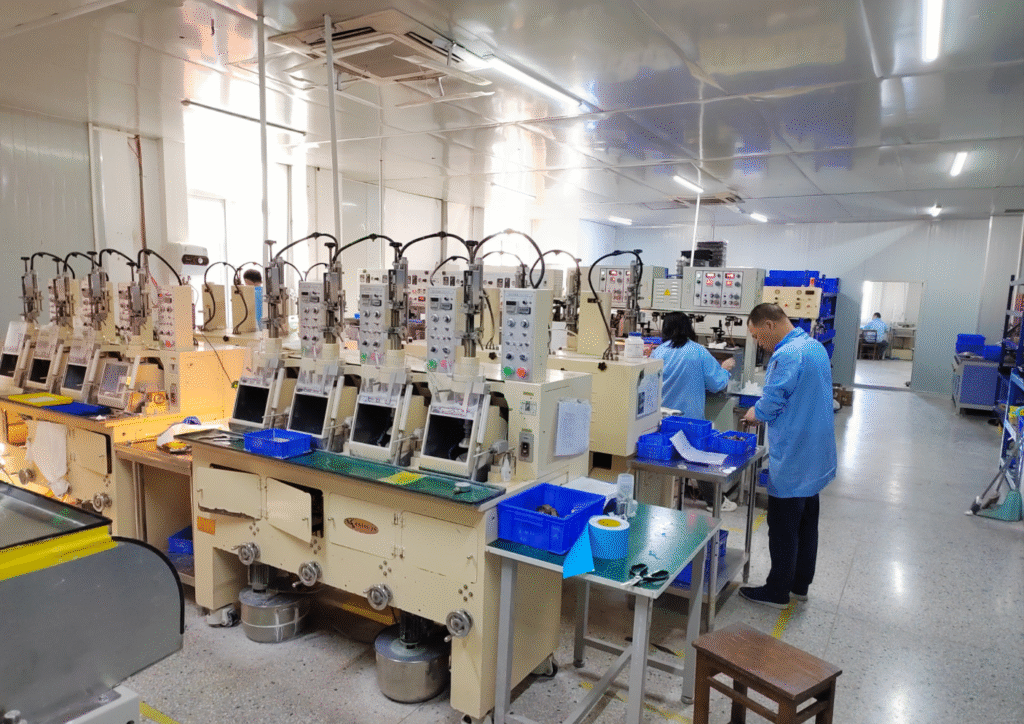
Custom Calomel Components at Bote Optics
At Bote Optics, we offer:
- Custom-shaped Calomel lenses and windows
- Glan-Calomel polarizers and prisms
- Waveplates for mid-IR laser systems
- Component integration and IR coating services
We focus on precision polishing, anti-reflective coatings, and integration of Calomel elements with standard IR lens assemblies. Our Singapore-based facility ensures export compliance, short lead times, and technical support for global clients.
FAQs About Calomel Optical Components
Q1: Is Calomel toxic?
Yes, Calomel (Hg₂Cl₂) contains mercury and must be handled carefully. At Bote Optics, all processing and packaging follow safety and environmental standards.
Q2: Is Calomel hygroscopic?
No. Unlike many IR materials, Calomel is non-hygroscopic, which enhances its stability and longevity in field applications.
Q3: How does Calomel compare to ZnSe or Ge?
ZnSe and Ge are ideal for lenses and windows due to higher durability, but lack birefringence. Calomel is used for polarization control and wave retardation, not standard imaging optics.
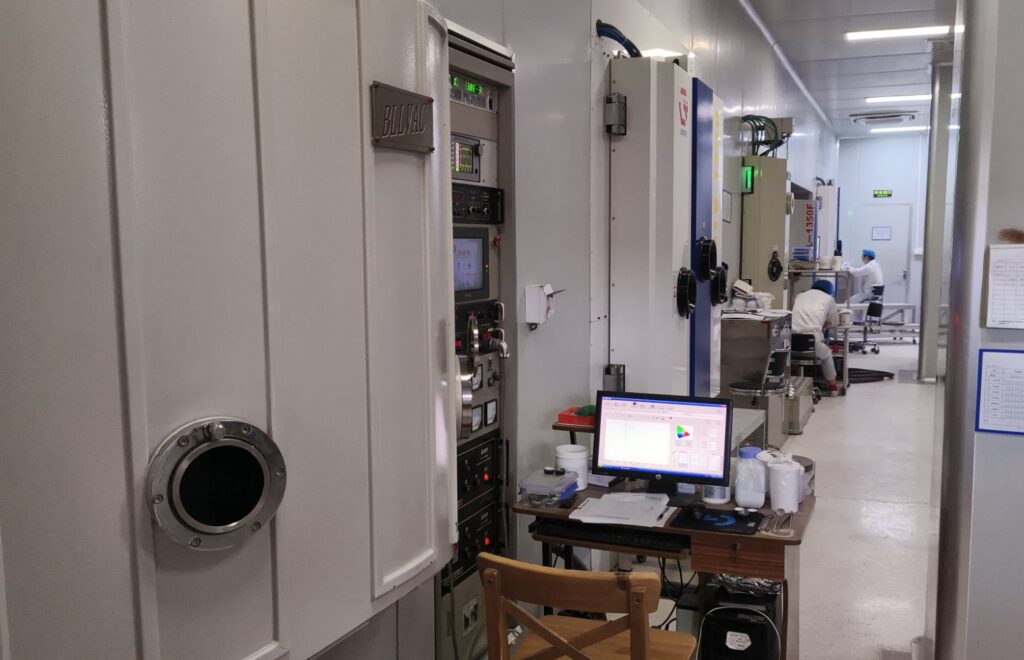
Conclusion: Calomel as a Strategic IR Optical Material
While Calomel is not widely used in commercial optics due to its niche properties and handling requirements, its extreme birefringence and broad IR transparency make it indispensable in advanced polarization-sensitive systems.
As a custom IR optics manufacturer, Bote Optics provides engineered Calomel components to researchers, OEMs, and integrators worldwide. Contact us today to explore how Calomel can elevate your next-generation IR design.

